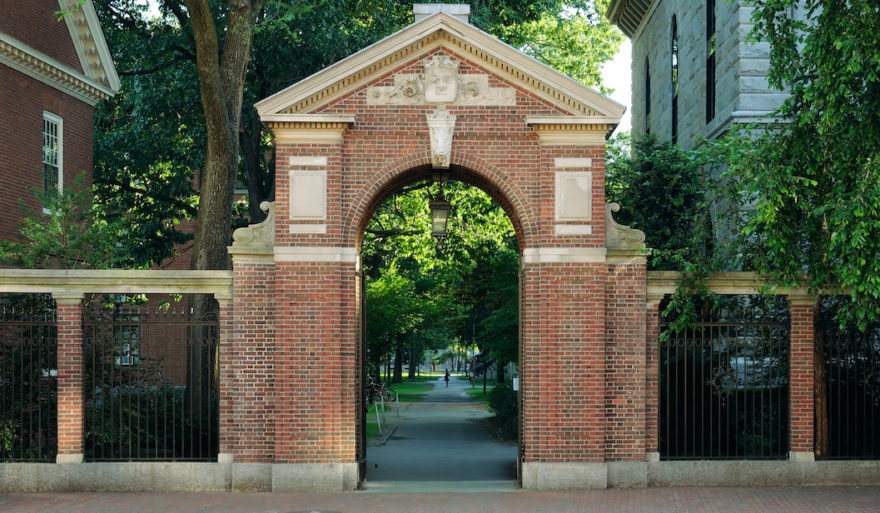
Boston’s reputation as a city with vibrant careers in biotech, computing, and education has increased the popularity of all its universities. In recent years, colleges and universities in and around Boston (including those in its neighboring suburbs) have received a growing number of applications, and as a result, falling admission rates.
Below, you can find a table showing the overall admission rate at eight Boston-area colleges and universities over the past three admissions cycles:
| University | Class of 2024 | Class of 2025 | Class of 2026 |
| Harvard University | 4.9% | 3.4% | 3.2% |
| Massachusetts Institute of Technology | 7.3% | 4.1% | 3.9% |
| Tufts University | 15% | 11% | 9% |
| Northeastern University | 20% | 18% | 6.7% |
| Boston University | 18% | 18% | 14% |
| Boston College | 24% | 19% | 16% |
| Wellesley College | 19% | 16% | 13% |
Harvard University: It may have seemed impossible that Harvard’s admission rate could fall further after they accepted only 3.4% of applicants during the 2020-2021 admissions cycle, and yet somehow they managed. For the Class of 2026, Harvard accepted barely 3% of first-year applicants, with just under 2,000 students offered spots out of more than 61,000 applications.
Massachusetts Institute of Technology (MIT): Like its neighbor in Cambridge, MIT’s admission rate was already in the single digits at the beginning of the pandemic, but it has fallen even further in the last three years. For the Class of 2026, MIT offered spots to just under 1,350 applicants, out of nearly 34,000 applications. It remains to be seen whether MIT’s return to requiring standardized testing for entrance will impact these record-high numbers.
Tufts University: Boston-area universities outside the Top 10 in the U.S. News rankings have also benefited from this overall trend. For instance, in the last two decades, Tufts has transformed from a regionally well-regarded university to one of the most selective schools in the nation. For the Class of 2026, Tufts admitted less than 10% of its nearly 35,000 applicants, an admission rate comparable to prestigious schools like Northwestern, Cornell, Rice, and Washington University in St. Louis.
Northeastern University: Arguably, Northeastern’s star has risen more rapidly over the past five years than any other university in the greater Boston area, and perhaps even the country. Its extensive investment in its academic programs, new housing and student opportunities, and marketing and outreach have substantially increased its name recognition and popularity among both local and national high school students. As a result, its acceptance rate has fallen steadily in recent years, and for the Class of 2026, fewer than 7% of first-year applicants to Northeastern were offered a spot on campus for Fall 2022.
Boston University (BU): Boston University experienced one of the sharpest declines in its admission rate this year, with only 14% of first-applicants being offered admission. BU’s central location and excellent research opportunities have certainly driven up applications, and spots were even more limited than normal after two years of over-enrollment during the pandemic, leading to limited space on campus and in courses.
Boston College (BC): Like Tufts, BC has benefited from its location, strong campus community, and rigorous academics—as well as growing interest in Catholic universities. Like other selective schools, BC received a record number of applications for the Class of 2026, more than 40,000, and accepted a mere 16% of them. This marks a significant change from even just three years ago, when BC accepted almost a quarter of its first-year applicants.
Wellesley College: Although Boston’s schools are mostly universities, at least one liberal arts college has also seen its selectivity increase dramatically over the past few years. Wellesley College, one of the United States’ best-known women’s colleges, also received more than 8,700 applications, a record-high number in school history. Now, its 13% admission rate puts it in the same company of selectivity as any top-ranked university.
At Spark Admissions, we’re committed not only to keeping close track of admissions trends, but also to helping students understand how to become a more competitive applicant in light of the trends. Spark’s acceptance rates at top schools is nearly 8 times higher than the national admission rates. If you’d like to learn how competitive you are as an applicant and learn tips of how to improve your chances of admission, reach out to us to schedule a complimentary consultation with one of our seasoned consultants. We look forward to helping you achieve your college goals!
Contact us to learn more about our admissions consulting services.